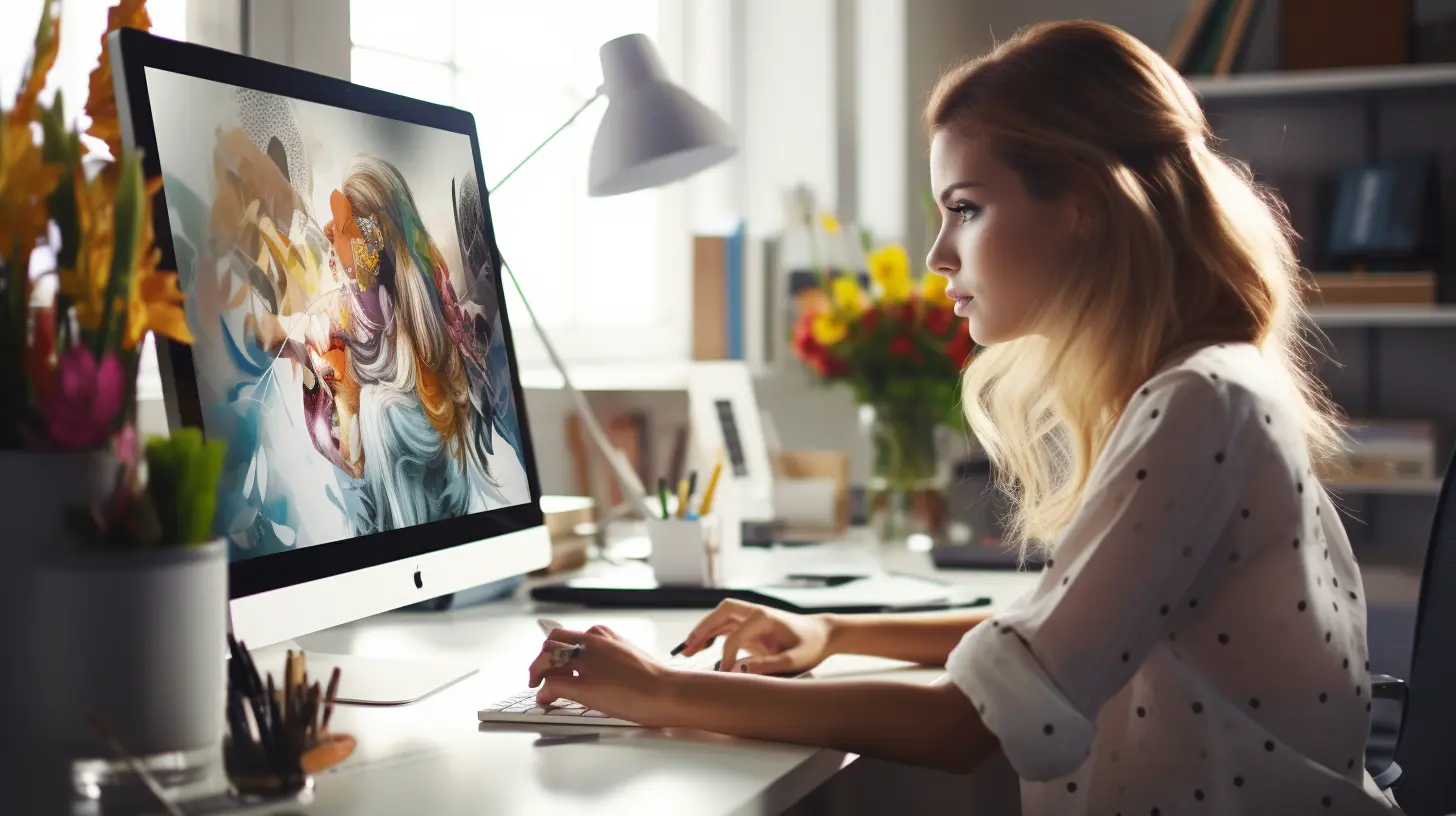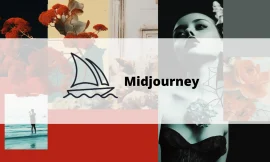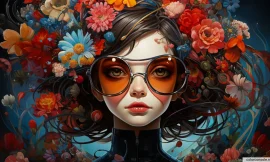Midjourney (what is Midjourney) is a generative artificial intelligence program that creates images from text prompts. It is a type of AI that utilizes natural language processing to generate new visual media. Midjourney expands human imagination and creativity by producing images from descriptive text inputs. Similar to programs like Stable Diffusion and DALL-E by OpenAI, Midjourney explores new frontiers in AI’s ability to interpret and visualize human thinking and ideas. The technology behind Midjourney represents innovative progress in AI’s capacity for understanding natural language and generating corresponding novel images.
Midjourney (How to use Midjourney) requires a Discord account and paid subscription in order to utilize its AI image generation capabilities. The process involves making a Discord account, joining the Midjourney server, choosing a subscription plan, and then using text prompts to create images through the Discord bot.
Table of Contents
What is a prompt in AI?
An AI prompt is a piece of text or code that is provided to an artificial intelligence system to guide its output. The prompt acts as instructions that tell the AI model what kind of content to generate. For example, a prompt may specify that the AI should write a poem, translate a sentence into another language, or summarize a long text passage. Prompts help focus the AI so that it generates relevant outputs instead of random text. They provide context and set expectations so that the AI understands the goal of the task. Prompts can be a few words, a sentence, a paragraph, or even a dataset depending on the capabilities of the AI system. Carefully crafted prompts are essential for generating coherent, high-quality results from AI models. The prompt defines the starting point for the AI, and guides it to produce outputs that make sense given the prompt.
How to write a basic prompt for Midjourney?
Midjourney is an AI system that generates visual imagery based on text prompts. To write a basic prompt, start with a clear description of the desired image using concise language. For example, “A small cat sitting in a field of flowers.” This gives Midjourney the key details like the subject (cat), the setting (field of flowers), and descriptors like size (small).
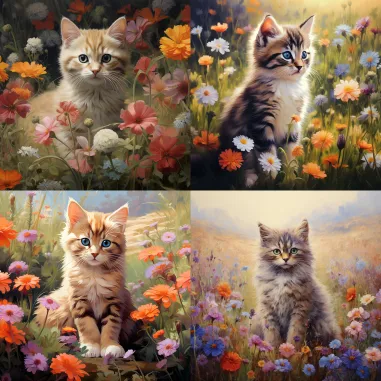
You can build on the prompt to make it more detailed and personalized. For instance, “A cute orange tabby kitten sitting in a field of yellow daisies under a blue sky.” Details like the cat breed, flower types, colors and scenery help Midjourney generate a more specific image. When crafting prompts, focus on essential nouns and adjectives while avoiding ambiguous words. Test variations of the prompt to see which phrasing produces the best results. With practice, you’ll learn how to write effective prompts that communicate exactly what you want Midjourney to illustrate.
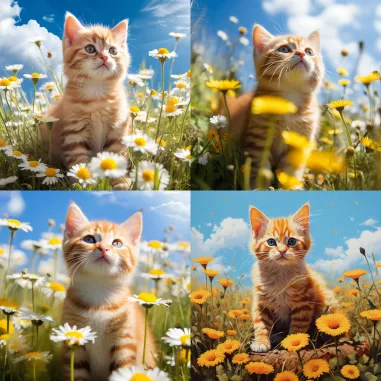
To write a basic prompt for Midjourney, you can follow these steps:
- Start with a subject: What do you want to see in your image? It could be a person, animal, object, place, or anything else.
- Add some details: What does your subject look like? What is it doing? Where is it? The more descriptive you are, Midjourney will understand what you want.
- Use keywords: Midjourney understands certain keywords that can help you generate specific types of images. For example, if you want to generate a realistic image, you could use the keyword “realistic”.
How to use parameters to create a new image in Midjourney?
Midjourney is an artificial intelligence system that can create images from text descriptions. When you type a prompt to Midjourney, you can also add special instructions called “parameters” to change how it makes the image. Parameters are like options you can tweak that tell Midjourney what kind of style, colors, composition, and other aspects you want the image to have. Parameters help control the image generation process so you can get an output image closer to what you imagined. They allow you to experiment and refine the prompt to get Midjourney to create the kind of image you want.
--version
The version parameter allows you to specify which version of the Midjourney algorithm you want to use when generating images. The supported versions are 1, 2, 3, 4, 5, 5.1, and 5.2. To use the version parameter, you can either pass –version <version/> or –v <version/> when prompting Midjourney to generate an image. For example, if you want to use version 3 of the algorithm, you would say –version 3 or –v 3. The different versions represent updates and improvements that have been made to the Midjourney algorithm over time. So newer versions like 5 and 5.2 typically produce higher quality and more realistic images compared to older versions like 1 and 2. Specifying a version allows you to control which iteration of the Midjourney AI you want to leverage when creating images.
--ar
The –ar or –aspect parameter allows you to change the aspect ratio of the images generated by Midjourney. The aspect ratio refers to the proportional relationship between an image’s width and height. By default, Midjourney generates square images with an aspect ratio of 1:1. However, you can customize the aspect ratio to get different rectangular image sizes and shapes. For example, –ar 16:9 will create a widescreen horizontal image, –ar 4:3 will make a more traditional vertical rectangular image, and –ar 2:3 will generate a narrow vertical portrait layout. The –aspect or –ar parameters provide creative flexibility by letting you define custom image dimensions rather than just square sizes. Specifying an intended display aspect ratio can help Midjourney better compose and frame images for your desired output.
--style
The Midjourney image generation system allows users to control the style of generated images through a `–style` parameter. This parameter has different options depending on the Midjourney version being used. In Version 5.1 and 5.2, `–style <raw>` toggles between the two latest system versions. In Version 4, `–style <4a, 4b, or 4c>` switches between the three main model variants of V4. Finally, in the new Niji Version 5, `–style <cute, expressive, original, or scenic>` chooses between four distinct aesthetic styles.
--chaos
The `–chaos` parameter allows you to control the unpredictability and variation in Midjourney’s image generations. It takes a number from 0 to 100 as input. Higher chaos values will make the AI generate more unusual, unexpected, and randomized results. Lower chaos values will produce more consistent, coherent images that closely match the prompt. Setting chaos to 0 minimizes variation, giving the most predictable outputs. In contrast, a chaos of 100 maximizes the randomness in the AI’s creations.
--fast
The `–fast` parameter allows you to temporarily switch a prompt to use Midjourney’s Fast Mode for faster image generation. By default, Midjourney is set to generate images using Fast Mode.
--image weight
The `–iw` parameter allows you to control the influence of the image prompt relative to the text prompt when generating images in Midjourney. It takes a value from 0 to 2. The default image weight is 1, which gives equal influence to both the text and image inputs. Setting `–iw` to 0 will minimize the impact of the image prompt, relying solely on the text description to guide the AI. In contrast, `–iw 2` maximizes the influence of the provided image on the output. The AI will attempt to match aspects of the image as closely as possible. In between values like `–iw 1.5` give more emphasis to the image over text, while `–iw 0.5` emphasizes the text prompt more heavily. Adjusting the `–iw` parameter therefore allows you to tweak the balance between text and image inputs when creating AI generations in Midjourney.
--no
The `–no` parameter allows you to specify elements you want to exclude or avoid in your AI image generations. It is used for “negative prompting” – telling the AI what not to include. To use it, add `–no` followed by the object, concept, or aspect you want to remove from the output image. For example, `–no plants` would instruct Midjourney to try to avoid generating any plants in the image. `–no people` would remove people. You can chain together multiple `–no` commands, like `–no ocean –no boats` to remove both oceans and boats. The AI will attempt to generate an image that matches the rest of the prompt while excluding the negatively prompted elements. However, the system may not always perfectly eliminate those features. Overall, the `–no` parameter gives you a way to guide image generation by specifying things you don’t want included in the final result.
--quality
Midjourney allows users to control the quality and rendering time of generated images through a quality parameter. This parameter can be set to .25, .5, or 1, with 1 being the highest quality. The default is 1. Higher values result in better image quality but take more time to render, while lower values are faster but produce less detailed images. The quality setting impacts how many GPU minutes are used to generate each image. So if you want the best possible quality, set quality to 1, but keep in mind this will take the longest to render. If you just want a quick draft image, choose a lower quality setting like .25.
--relax
The Midjourney platform offers a feature called the “relax” parameter, which allows users to modify the way it generates images when running a job in Relax Mode. When you activate the “–relax” option, it essentially overrides your current settings and instructs Midjourney to adopt a more relaxed approach in image generation.
--stylize
The AI art generator Midjourney has a parameter called `–stylize` or `–s` that controls how much the art style is applied to images. This parameter takes a number from 0 to 1000. Lower numbers around 0 mean the image will look more realistic and closely match the prompt. Higher numbers like 1000 make the image look more artistic with vivid colors, interesting shapes and lighting, but it may diverge more from the original prompt.
--tile
One useful feature of Midjourney is the “–tile” parameter. This tells Midjourney to create an image that can be tiled or repeated seamlessly to make continuous patterns. For example, Midjourney could generate a cool abstract shape or texture. Then using the –tile parameter will make that image repeatable so it can be used as a tile to cover a whole background with that pattern. The –tile parameter is great for making backgrounds, wallpapers, wrapping paper, fabrics, and other designs that need to have a continuous look and feel. So the –tile parameter gives a simple way to take any Midjourney image and turn it into a reusable seamless tile.
--turbo
Midjourney normally takes some time to create each image, depending on how complex it is. Midjourney has a feature called “Turbo Mode” that makes the image generation much faster. The –turbo parameter allows you to override your default setting and use Turbo Mode for a single image. So if you add –turbo to your prompt when generating an image, Midjourney will work extra fast to create that one image as quickly as possible.
--repeat
Midjourney offers a useful parameter called –repeat, also available in the shorthand form -r, that allows users to easily create multiple images from a single prompt. By specifying a number between 1-40 after –repeat, such as –repeat 5, Midjourney will generate that number of images using the same prompt. This can be helpful for quickly creating variations on a theme or rerunning a prompt multiple times to get a better result. The –repeat parameter is a handy feature in Midjourney that saves time and effort when a user wants to generate multiple images with the same description. It’s a simple way to rerun a prompt without having to copy and paste it each time. Even someone new to Midjourney should easily grasp how the –repeat parameter can be leveraged to efficiently produce multiple AI-generated images from a single input.
--seed
When generating images, Midjourney uses random seed numbers as a starting point. These act like a field of visual noise that the AI builds on top of. Seed numbers are 32-bit integers ranging from 0 to 4294967295. By default, Midjourney picks a random seed for each image. But you can specify a seed manually using the –seed or –same seed parameter. Providing the same seed number with a prompt will make Midjourney generate similar images each time. This is because it begins the image generation from the same initial noise pattern. Specifying a seed allows you to reproducibly generate variations on a theme. If you find a seed that produces an aesthetic you like for a prompt, you can reuse that seed to get more images with a similar look. So the –seed parameter gives control over the randomness in Midjourney’s image generation. It’s a useful trick for creatives who want to explore a specific visual style for a prompt.
--stop
Midjourney generates images by gradually refining them over multiple stages, starting with noise and slowly adding more detail. By default, it completes all stages to produce a fully detailed image. However, you can use the –stop parameter to halt this process partway through. The integer value after –stop, ranging from 10 to 100, determines the percentage of stages to complete before stopping. For example, –stop 50 will stop the image generation after completing 50% of the stages. Using –stop produces blurrier, less refined results, as there are fewer iterations of detailing. Stopping early can be creatively useful to achieve a rough, impressionistic style. But it requires some experimentation to find the optimal –stop percentage for a prompt. Overall, the –stop parameter gives you more control over the image generation process in Midjourney. It’s one more tool to achieve a particular aesthetic by interrupting the full rendering of an image.
--weird
Midjourney has an experimental parameter called –weird, or -w for short, that alters the image generation process to create more unusual, surreal, or unexpected results. The number after –weird can range from 0 to 3000 and controls how heavily the “weirdness” effect is applied. Higher numbers lead to more distortions and abstract interpretations of the prompt. Lower numbers introduce smaller tweaks and variations. The –weird parameter is useful for pushing Midjourney’s creativity into more experimental directions when you want to explore strange and imaginative visuals. It can derail the AI from predictable outputs and lead to serendipitous images that you may not have conceived of directly. However, –weird works best in moderation, as very high settings can overwhelm prompts and make images unrecognizable. But judiciously applied, the –weird parameter sparks Midjourney’s artistic flair for the surreal. It’s a handy option when you want to venture beyond straightforward interpretations of a prompt.
